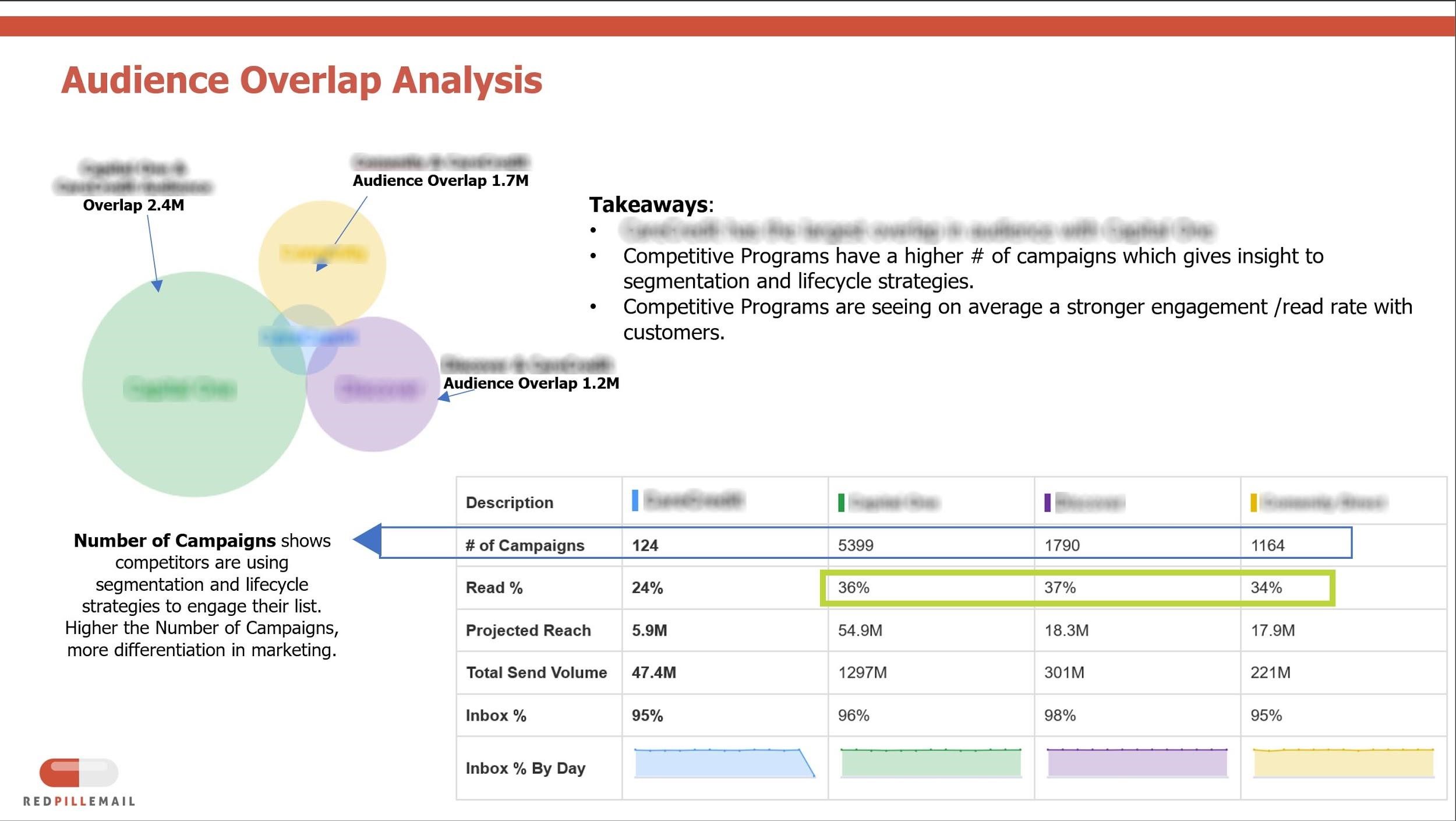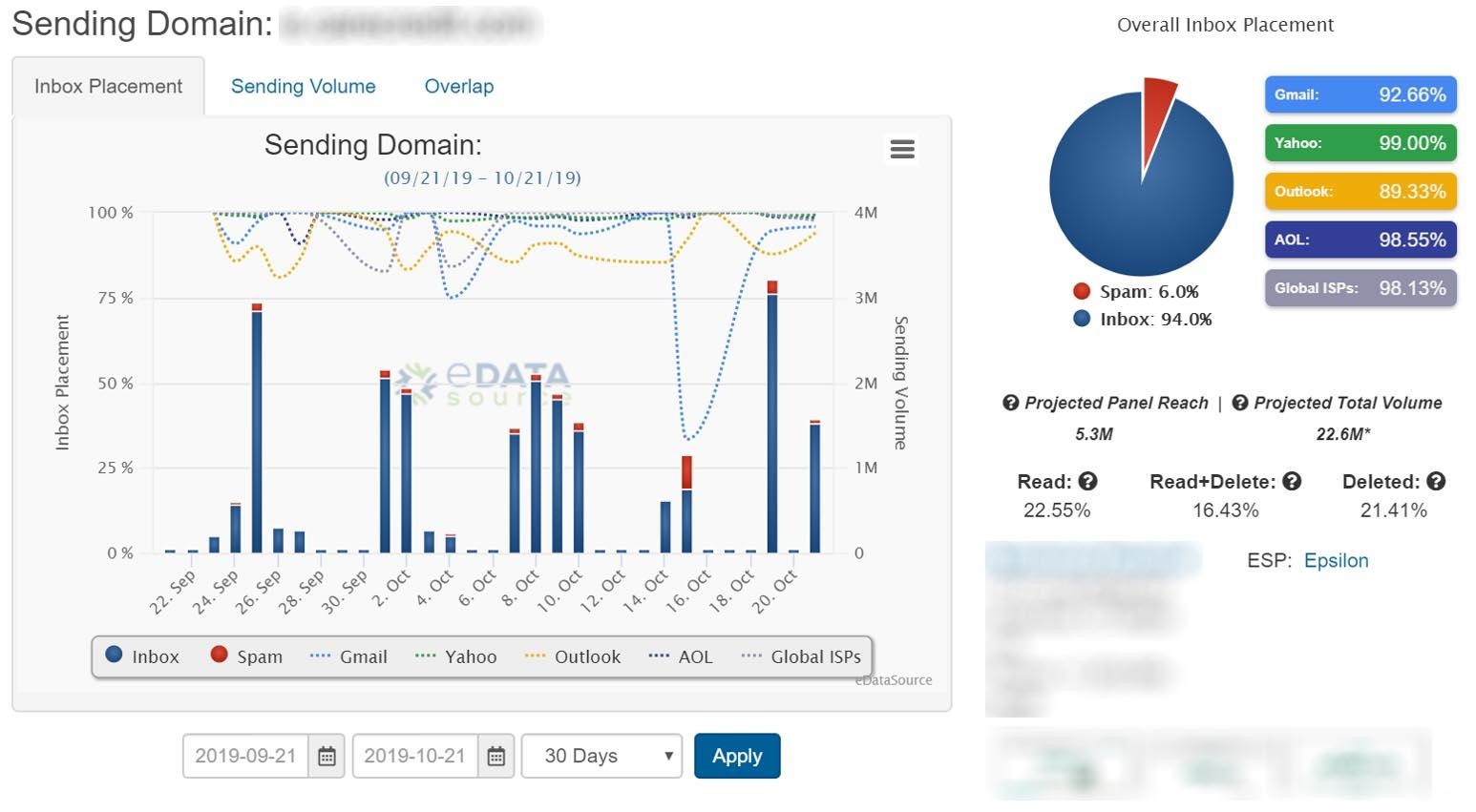How Data Can Make You a Better Email Marketer
These are indeed challenging times for all of us. How do we make the right decisions on what messages to send, when to send them, how not to offend or be tone-deaf? A lot of us are confused. If marketing is anything, it's predictable, and you can use it to forecast.
Red Pill Email is like others in that our purpose is to help clients decide which paths to take. It's easier for an agency to make these decisions because we rely on third-party data to make decisions. Agencies like ours also look across verticals to get a wider-spectrum view on markets, strategies and consumer sentiment.
I want to talk today about how we approach that presentation layer to our clients and how important it is for you as a marketer to focus on the broader picture, not just on what you're doing on a single project or program.
A perfect example is a quarterly business review (a QBR) we did for a client (this, by the way, is something you should be doing for your own program or project). We focused on three areas where agencies use data-derived business intelligence to talk to their customers.
1. Go beyond the numbers to find useful business insights.
Marketers are always asking, "How am I doing compared to everyone else?"
We try to help our clients understand why that's not the question they should be asking. You are different from your nearest competitor because you have your own business. You're not a copycat. What works for them might not work for you because you have different products, customers, strategies or markets.
We encourage clients to use competitive intelligence as a baseline for establishing their own key performance indicators, or KPIs. This is important because you know your business the best. You know your customers, your prices, margins and advertising plans.
That’s why it’s important to set your own KPIs. Measure yourself against yourself, not another company. Trying to guess at what other companies are doing to be successful is a waste of time and activity.
One helpful study we do is to use Competitive Tracker by SparkPost to analyze audience overlap. This is useful because it has intelligence on millions of email campaigns every year, so we get the broadest possible view of campaigns sent by our clients' competitors.
This slide from an actual recent client strategy session shows us where our client overlaps with other companies but also gives us intel on how many campaigns those companies are sending, their sending times and read rates, and how engaged their users are.

It isn't enough simply to measure up to the level of your competition, so we don't stop just with sharing the numbers. Instead, we use this data to fuel a discussion that challenges our client to think past the comparisons rise to the level of strategy – the "why" behind the numbers.
These reports inform marketers about the other emails – besides our client's – that people are getting in their inboxes. If you know how your audiences overlap, you'll know what kinds of emails are competing for their attention. Now you can start thinking about how to rise above the noise and clutter in the inbox.
The numbers in any report, therefore, are meaningless unless you can understand why – not just what – they are and what impact they have for your email planning.
Besides overlap analysis, we also focus on which days competitors are sending email. When you can see which days your competitors are sending on, you can decide whether you should avoid that day, maybe sending a day before or after.
That kind of intelligence helps you see what the competition is doing. Then you use that information to think about what you have to do to compete and to achieve your business goals.
2. Do you truly know what your competitors are sending?
Competitive intelligence in the inbox is critically important, but, as we know, sophistication levels vary widely across companies. Consider political campaigns, for example.
A veteran of political campaign marketing told me one campaign would test 36 subject lines every time they sent an email campaign. They would find the subject lines that worked best and send those out to different audience groups. So, not every recipient saw the same subject line in the inbox.
If we assume companies are using sophistication, relevance and dynamic content to send email, we can't expect that the private Gmail accounts you sent up to secretly collect competitor emails are receiving every version of the email in each campaign for the week.
Tools like Competitive Tracker can tell you what email your competitors are sending along with multiple variations intended for different audiences. You won’t see those in your Gmail accounts because - sorry if this sounds obvious - because you won’t qualify for all those targeted or personalized sends.
3. Make your deliverability report numbers make sense.
Another common report we share with clients is deliverability. Are their emails getting into the inbox? Are they making mistakes or getting blacklisted? The amount of data for deliverability reports is vast. Companies like SparkPost and Validity (Return Path and 250ok) and your ESP all offer reports of varying degrees, measuring different parts of the deliverability spectrum.

What's important is not hiring a company that gives you just a wealth of data. Also look at the methods it uses to create the data. And, what do you do with the data? How often do you check it? Marketers often hire a company and set up alerts but then just wait for the alerts instead of staying on top of the data.
The data by itself doesn't tell the full story. You have to pick what's important for you to know, to add it to your KPIs and your QBR. If you work with an agency, have your account executives explain what the data means and how serious it is.
For example, one report might show your sending IP shows up on some block lists. But not all block lists are major problems, and some resolve themselves in time. An agency likely uses multiple deliverability reporting tools, to give you a well-rounded view into your inbox performance.
Wrapping up
Admittedly, much more goes into our QBRs. On a program level, some companies conduct regular comprehensive examinations of their efforts. It’s something we recommend to companies on a regular basis as it keeps you fresh and on the mark with your strategies and how they ladder down to tactics.
Now, you might think this is a not-so-subtle pitch for Red Pill Email or Competitive Tracker by SparkPost. It's not. There are many great email agencies to choose from, and I'm honored to be friends with their leaders and teams. What I have learned through interactions with long-time and new clients is that agencies are important for all companies to consider.
Where are you unsure in what to do or how to move forward? There's a cost to confusion and wrong directions.
I can't tell you how often clients will ask us to help and then decide they can do it better themselves. Then they break things and come back to us six months later for help. We fix things and get them back on track. But those lost six months cost them time, money and position.
The point of having a toolkit and creating reports is to make clients smarter. It's not about the numbers in the report itself but what they mean – not just one data point but all of them in context.
That's what your agency can help you do – and to grow faster than you could do it on your own.

 How to resolve AdBlock issue?
How to resolve AdBlock issue? 
